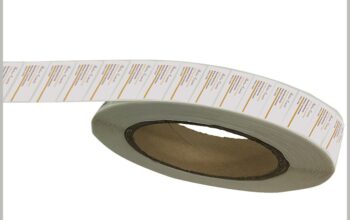Newly revealed research shows most small Australian businesses were struggling with cash flow prior to the COVID-19 pandemic. Additional research highlights the fact that 52 percent of Australian small business owners had problems paying themselves.
Remember, when the government issued shutdown orders, many small businesses made the quick decision to immediately let their staff go. This phenomenon is now easily explained by the fact that over one million small companies were already facing financial uncertainty. That translates into one of every two Australian Small to Medium Enterprises (SME) were unable to make a profit even before the virus pandemic.
Money.com.au commissioned an independent survey of 261 Australian business owners to learn how healthy company finances were before the Coronavirus pandemic. We’ll dive into the results and you may be shocked to see the findings.
What About Public Liability Insurance?
One thing that wasn’t reviewed is how many SMEs reviewed their public liability insurance in the last 12 months. The cost and cover your business needs has changed a lot in 2020, a robust public liability insurance plan can actually help preserve your business bank accounts.
This type of insurance will help your company from absorbing financial damages and legal fees associated with negligence, including property damages and personal injuries. By having a public liability policy, you won’t have to dip into your company’s checking account to cover the costs of an unhappy client.
Check out BizCover, their platform compares policies across many different insurers with instant online quotes. By doing so, you will build a great financial foundation for your painting business.
How Were SMEs Dealing with Cash Flow Before COVID-19?
Cash flow is always one of the biggest challenges for small business owners. The Coronavirus outbreak added even more pressure to continue paying outgoing costs even though there was a nationwide lockdown. However, more than half of all Australian SMEs were experiencing a lot of issues prior to the pandemic.
For instance, prior to the shutdowns, 52% of all business owners had gone without paying themselves a salary because of cash flow problems. In the case of small business owners, 73% skipped or delayed paying themselves because of low cash flow.
Other statistics showed that 50% of all business owners were earning less income than their top employees. For small business owners, the percentage is higher. Specifically, 66% of small business owners were earning less income than their top employees.
The study further advised that many SMEs with cash flow issues also had personal financial hardships too. Obviously, as you know, the quality of a business owner’s personal life can be seriously impacted by the success of their business.
Financial experts caution that this disparity between what the business makes and what the top employee makes could be part of the bigger picture. A small business owner may feel pressured to hire a highly qualified, and expensive, team member when the company really isn’t in stable enough position to cover the employee’s costs.
Lots of company owners assume they will be able to cover the payroll expenses by cutting back on their own payroll for the short-term. Unfortunately, this can become a snowball effect that SMEs struggle to overcome, particularly with service-based companies.
What Are the Biggest Causes of SME Cash Flow Issues?
During this downtime, while COVID-19 is slowing down your work projects, it’s a good idea to get a grip on your own cash flow issues. There are four quick and easy things to avoid when it comes to managing your company’s money.
- Scheduled Payments: If you’re too busy working on the next project or hitting the next sales goal, you may forget to keep a watchful eye on the next incoming payment. You must be aware of the next outgoing payments too. The yin and yang of money in and money out IS what cash flow is all about. Plan out your payments for a few months.
- Collections: Do you have any outstanding invoices right now? Design a collection plan that’s easy to keep up on.
- Slow Paying Clients: Do you have a plan for when you’re a customer doesn’t pay timely? Do you charge fees or penalties for late payments? You need to consider how to handle customers that don’t pay on time.
- Ignoring Expenses: Many small businesses have a cash flow crunch because of unexpected costs (e.g. equipment repairs, natural disasters). Or maybe the small business has recurring charges that are quietly chipping away at the profits. Review your financial statements very closely and begin finding ways to control costs.
Will the Australian Stimulus Package Help?
In March 2020, the Australian federal government announced a $17.6 billion stimulus package. That’s the equivalent of 0.9% of the nation’s GDP. Small business owners, like painting companies, were promised as much as $25,000 to cover employee wages. This payment was to be issued by the Australian Taxation Office based on the business activity statements filed by the company.
The federal government’s large stimulus package is meant to help struggling SMEs. Yet many small businesses need even more support to manage their cash flow since they were already struggling before the pandemic. Financial experts speculate that the stimulus money will help for the short-term but that small businesses will once again find themselves desperate for cash sooner rather than later.




